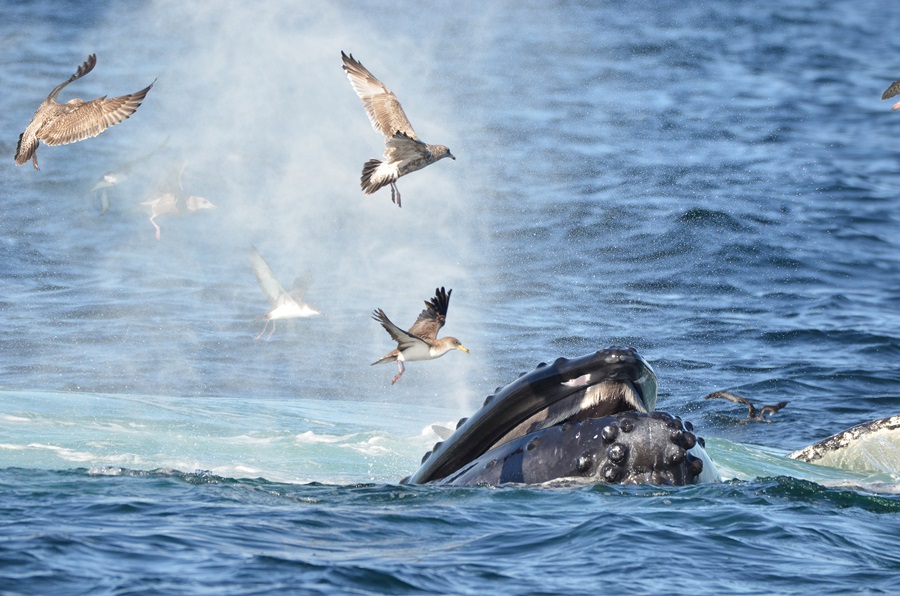We are still waiting patiently — or not so patiently in some cases — for the warmer weather to return to get those striped bass moving north. Water temperatures remain locked in the mid-40s to low 50s down to Cape May, N.J., and the bass run hasn’t even started yet in Long Island Sound and along the Jersey Shore. We have gone from thinking it was going to be an early start to the bass season to wondering if it will be a late start.
I have not heard anything encouraging about mackerel being around, which typically happens right before the bass arrive. The water still looks very clear, indicating the usual bloom of aquatic microorganisms hasn’t occurred yet. So, it’s hard to say how this will all unfold with May just a few days away.

Meanwhile, 20 to 25 right whales made an appearance in Provincetown Harbor. As luck would have it, the Dolphin Fleet had a trip going out, and their passengers were treated to something that few people in the world will ever get to see. The right whales are not typically this far in. They prefer the big quantities of plankton found around Herring Cove and the Race.
It’s not far-fetched, however, to think they followed the plankton to Long Point and the harbor. Then, when they ran out of plankton to consume, they simply hung around to check things out. Tides and currents being what they are — that is, running hard and fast in and out of Cape Cod four times a day — shifts in wind direction and velocity can shift food sources unexpectedly. The bay can easily sweep plankton right into our harbor.
It’s a good thing these whales came into the harbor in April and not July when the potential for disastrous encounters with boat and ferry traffic will be high. Fortunately, by the time our high season comes, these whales will be far north of us in the Bay of Fundy.
When I heard that they were in our harbor, I went down to MacMillan Wharf with my monocular, and I was amazed at the number of spouts I saw between Long Point and the West End breakwater. I have seen large groups of right whales before, but they’ve always been spread out over a large area, never in a group so densely packed together in one place.
They moved closer and closer into the harbor, and by the end of the day a few even came within a couple of hundred feet of the east end of the breakwater. I did not observe much feeding but did see some tail lobbing and whales rolling on the surface. Standing there watching these magnificent, highly endangered whales reinforced for me what a special marine ecosystem we have right here under our noses.
The whale watch season has officially started, and so far it has been very good. The Dolphin Fleet reports they’ve seen not only these right whales but humpbacks, finbacks, and white-sided dolphins as well on their trips.
The Mass. Div. of Marine Fisheries recently announced it will begin conducting its annual spring trawl survey through coastal waters, including those off Cape Cod, beginning on May 6. Surveys have been going on every May and September since 1978 to provide a comparative sampling of bottom-dwelling fish such as cod, haddock, and flounder from specific areas. The data are a driving force behind decisions regarding species management.
Living on the water as I do, I talk with commercial fishermen who claim the surveys are being done in areas that do not typically have big numbers of groundfish. They argue that the surveys are being done at the wrong depth for the time of year they do these analyses or are done in areas that never were highly productive.
And round and round we go as we try to evaluate population levels of fish we can’t see with our eyes.



